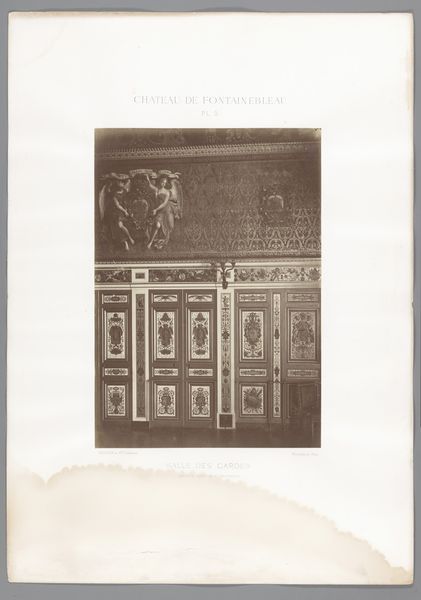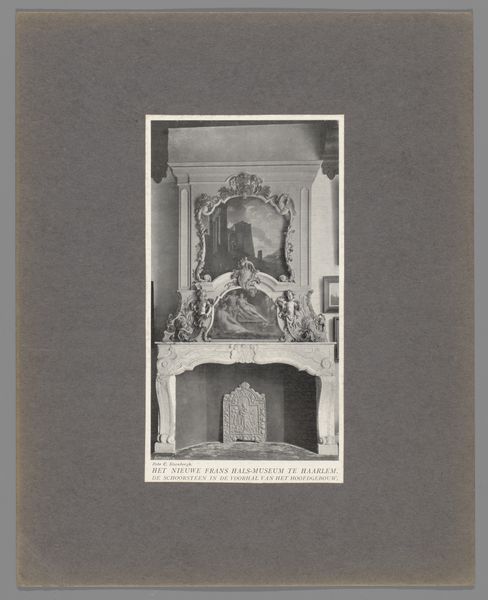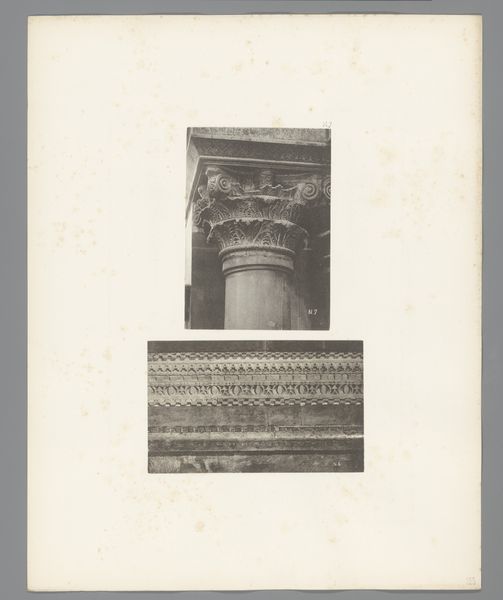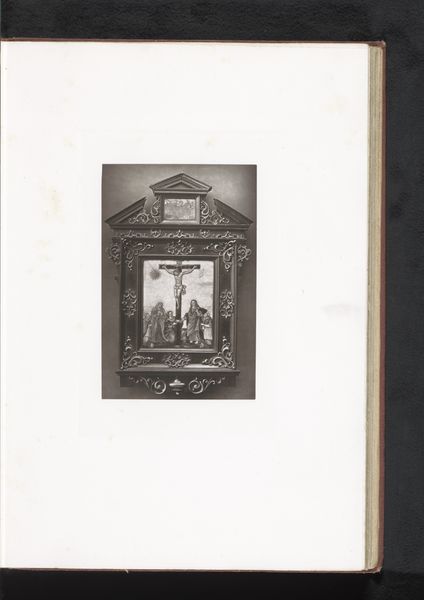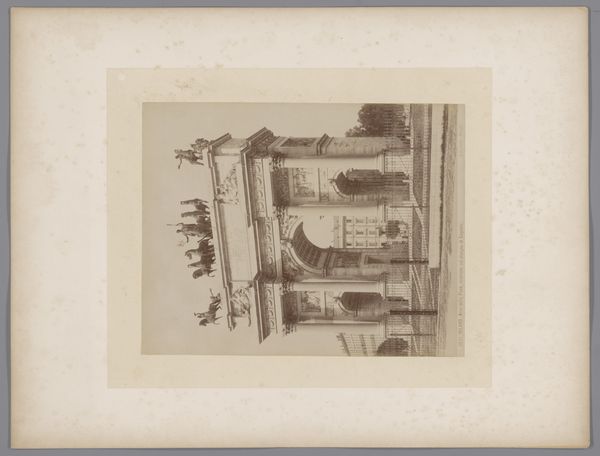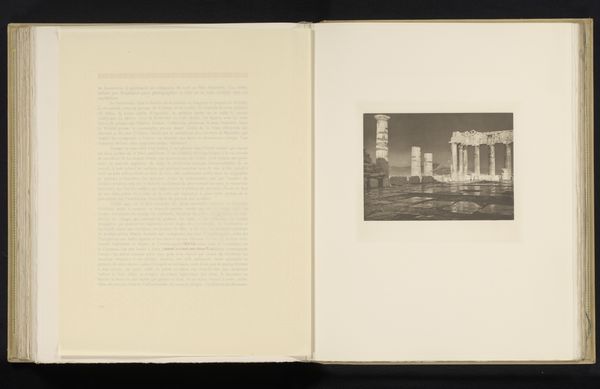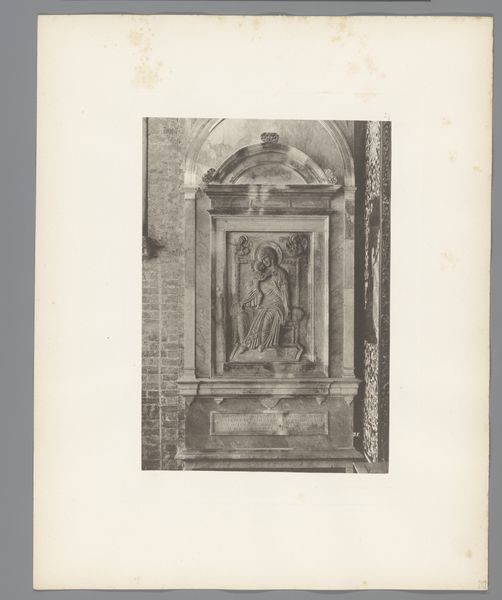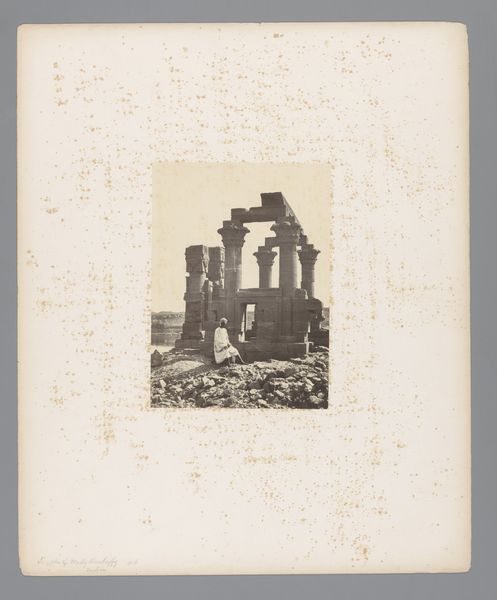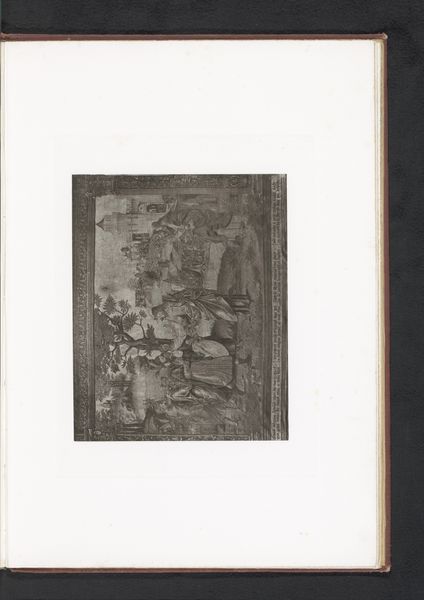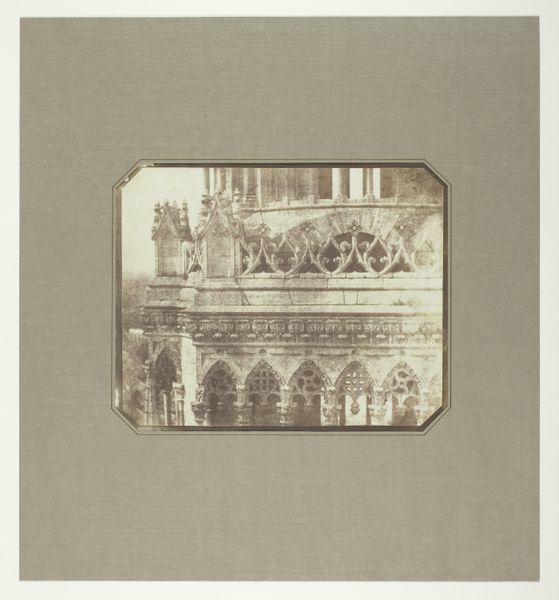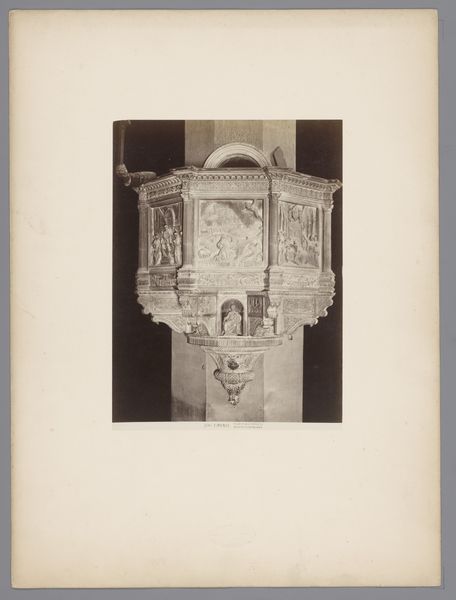
print, photography, gelatin-silver-print, architecture
# print
#
stone
#
memorial
#
landscape
#
classical-realism
#
photography
#
geometric
#
ancient-mediterranean
#
gelatin-silver-print
#
architecture
#
statue
Dimensions: height 85 mm, width 60 mm, height 125 mm, width 210 mm
Copyright: Rijks Museum: Open Domain
Editor: Here we have A.G.A. van Eelde’s “Kapitool in Dougga,” possibly from 1927, a gelatin-silver print showcasing Roman ruins. The structure itself dominates the frame, its columns and pediment stark against the sky, yet the people in the foreground give it scale and a sense of lived history. What stands out to you about the formal aspects of this photograph? Curator: The immediate strength lies in the geometry. Van Eelde has masterfully captured the temple’s form—the triangle of the pediment echoing in the arrangement of the stones below. Note the interplay of light and shadow which sculpt the image. How does the texture and tone create the form? What is your reading of it? Editor: I hadn't noticed that triangle mirroring effect before. It does give it a strong, stable feeling. Also, looking closely at the columns, you can see their texture. It’s rough, worn, adding to that sense of history and grandeur, while the figures are very smooth, almost dissolving in the image. But what about its status as photography versus another medium of rendering the space, such as a drawing? Curator: The photographic medium is crucial. Van Eelde uses light and shadow—its intrinsic qualities—to render texture in a way that line drawing or painting could only approximate. The stark contrasts of light and dark further emphasizes the inherent geometric solidity of the building, foregrounding its material presence. What feelings are stirred by the black and white presentation? Editor: Good point! The tones definitely underscore a timeless, austere quality. It also gives the image a documentarian feel. Thanks, seeing it from a purely compositional perspective really highlights choices I hadn’t considered. Curator: Exactly. Formal analysis offers direct access to the mechanics of meaning, highlighting both conscious and unconscious visual communication.
Comments
No comments
Be the first to comment and join the conversation on the ultimate creative platform.

